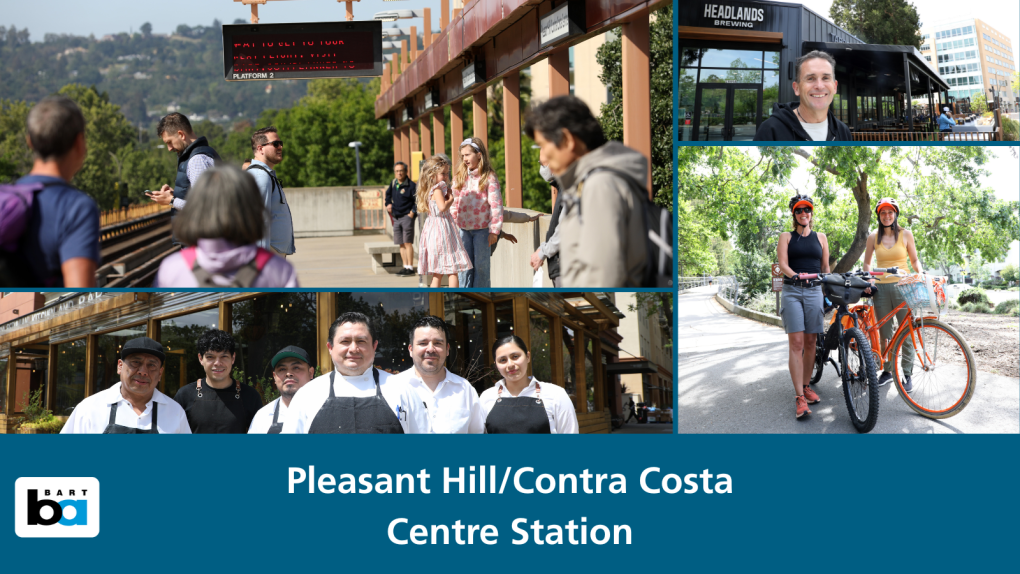BART's Impact: How Pleasant Hill/Contra Costa Centre Station supports a city’s businesses, residents, and tourists

Read more stories and see interactive maps about BART’s impact at bart.gov/impact.
BART's Impact
How do you measure BART's impact on the Bay Area?
You might look at the numbers. In fiscal year 2024, for example, BART contributed an estimated $2.7 billion* in economic activity to the five counties it serves. Another metric: Riders traveled over 750 million miles that same year – that's nearly a billion miles traveled on our tracks!
But other impacts go beyond stats and figures: BART makes people’s lives easier, BART reduces traffic, BART helps the environment. Numbers don't tell the whole story.
So, where to begin? Let's start small.
Case Study: Pleasant Hill/Contra Costa Centre Station
To understand BART’s impact, we will start by looking at a single station – Pleasant Hill/Contra Costa Centre. From this zoomed-in vantage point, we can illustrate how just one station transforms and sustains not just a neighborhood, but a broad community of residents, workers, businesses, travelers, and families.
Pleasant Hill/Contra Costa Centre Station sits at the convergence of Highway 680, the Iron Horse pedestrian and bicycle trail, multiple hotels and office buildings, and a vibrant mixed-use transit village with restaurants, gyms, bars, a dance school, 600-plus apartment complex, the list goes on . The station is the beating heart that enables these resources to exist and prosper. BART stations are not simply destinations -- stops on a line to get you here and there.
BART stations create destinations.
"Locating by a BART station is a great move for businesses. You have in-built customers, who are coming and going from the station, you can increase capacity by not needing a parking lot, and your employees can get to work affordably."
- BART Director Matt Rinn, whose district includes Pleasant Hill/Contra Costa Centre Station.
We connected with local homeowners, small business owners, a commuter, a major hotel chain, restaurants, neighborhood hangouts, and an apartment complex to understand firsthand why BART is essential to their bottom lines and the well-being of their community.
View a larger version of the interactive map by clicking here.